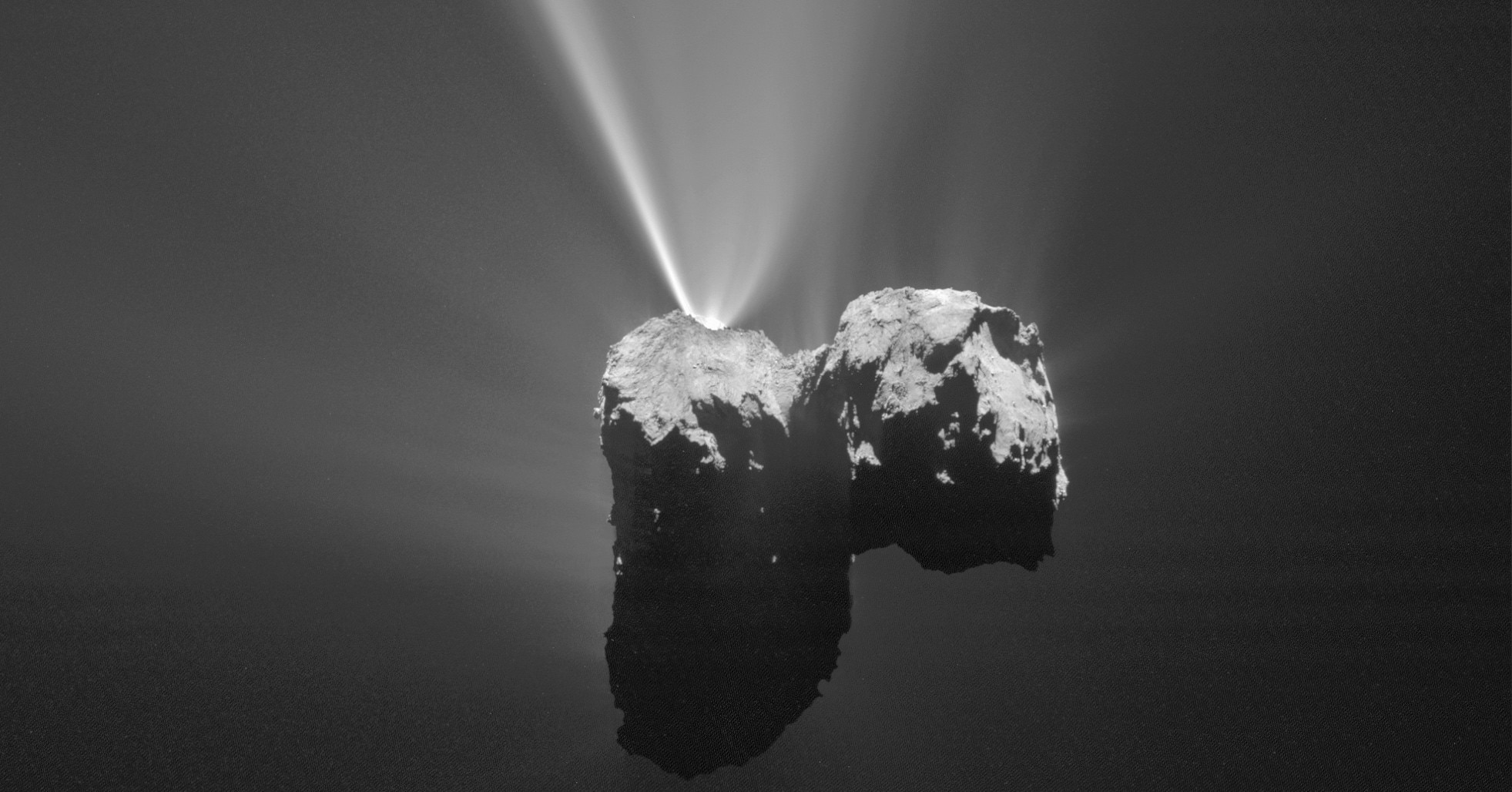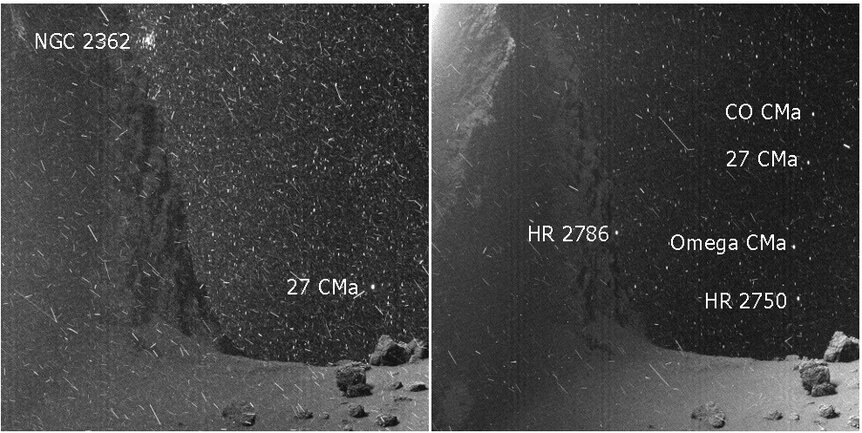Create a free profile to get unlimited access to exclusive videos, sweepstakes, and more!
MUST SEE VIDEO: Snowstorm on a comet!

On August 6, 2014, the European Space Agency's Rosetta spacecraft officially entered orbit around the comet 67/P Churyumov-Gerasimenko (let's call it '67P' for short). For the next two years it moved around the comet, taking incredible images, sent down an ill-fated lander, and expanded our knowledge of these icy solar system visitors hugely.
Typically, ESA didn't release much raw data from the spacecraft, so that scientists had a chance to look over the vast amount of information. However, they did recently open up some of the images taken by the OSIRIS instrument on board, which includes fantastic shots of the eerie landscape.
Twitter user landru79 saw an opportunity. They took some of the data, cleaned it up a bit, and then created a video that is as mind-blowing as it is jaw-dropping. Seriously, watch this:
Holy. WOW. [Note: Converting the GIF and uploading it to YouTube resulted in some compression noise, so check out landru79's original tweet to see the original.]
First off: I took the original animated GIF (which was on a loop) and created three versions for that animation above: The first clip moves quickly and is repeated once, the next one is slower and repeats, and then the third is slower yet and repeats. This gives you a chance to see what's what.
And what you're seeing is a fantastic landscape scene that looks like it's out of an old science fiction movie… but it's real.
The landscape itself is the comet. Comets are lumps of ice — things like frozen water, carbon dioxide, and ammonia — and rock, mostly in the form of gravel and dust. Some orbit the Sun on long ellipses, and when they get close in the ice turns into a gas, releasing ice flakes and the gravelly bits. This surrounds the solid nucleus with a gaseous/dusty coma, and that can then blow away from the comet due to the solar wind and pressure of sunlight to form the tail.
67P is a double-lobed comet, looking more like a rubber ducky than anything else. It's very roughly 4 or 5 km across, and takes about 6.4 years to circle the Sun once. Rosetta was about 13 kilometers from the comet as it took these images, slowly moving around it so that our vantage point in the video changes slightly. Comets are very dark, and it was three times farther from the Sun than Earth is when these images were taken, so the lighting is fainter. Also, these were on the "dark side" of the comet, so the illumination you see is from reflected sunlight by the coma. The video represents about a half hour of real time.
The landscape you're seeing in the video is the solid nucleus. The comet gravity is incredibly low, so there's only barely an "up" on it, but on the left there's a steep craggy cliff, and along the bottom a smoother region with boulders sticking out of it. In the background, you can actually see stars moving as the spacecraft orbited the comet! More on that in a sec.
But what steals the show is… snow! Well, ice and dust flying around in the foreground. Those are actually bits very near the spacecraft, indicating that flying near a comet, even a dozen kilometers away, can be hazardous! At first I was skeptical that's what this was (subatomic particles fly around space and hit spacecraft detectors, making streaks very similar what you see here), but slowing the video down makes it clear you're seeing physical objects outside the spacecraft. It is quite literally a snowy dust storm in space.
Incredible.
And the stars! Landru79 made a second video where the images have been stabilized such that the stars don't move, and it looks like the comet does. This one is amazing too:
You can see quite a few stars, including a cluster in the upper left. I couldn't ID it, but happily Mark McCaughren, Senior Advisor for Science & Exploration at ESA ran it through astrometry.net, a site that can identify stars in an image, and provided the answers. The star cluster is NGC 2362, a lovely collection of stars in the constellation of Canis Major, the Big Dog. With that in hand, and an app I like called Sky Safari, identifying the stars was easy. Here's what I found:
The exposure times in the Rosetta images are about 12 seconds, using the narrow angle camera on OSIRIS which sees an area of the sky roughly two degrees across (the full Moon is half a degree, so you could fit four full Moons across these images). 27 Canis Majoris (labeled 27 CMa in the image) is bright enough to see with the naked eye from Earth! So is the cluster, for that matter. Unfortunately, at my latitude, they set not long after the Sun does, but the next clear night I may go out with my binoculars and take a look for them. Then I will be seeing the same backdrop Rosetta did when it took these astonishing images…
Which makes me think. I've seen a couple of dozen comets myself through various telescopes, and literally thousands of images taken by observatories across the world and spacecraft far, far from it. So many of these photographs are just wondrous, showing us these weird, truly alien objects in different amounts of detail.
But animations like this one show us a wholly new view on 67P, in a very literal sense. It becomes not just some distant, unknowable thing, but a landscape, a snowscape, a place. Seriously, this could be an old-time movie clip made in Sweden or the Alps someplace, but it's actually the surface of a comet seen up close for the very first time.
It is so easy to despair given the state of affairs right now in the world. But I'm serious when I say that seeing sights like this, seeing what we can do, gives me hope. It really does. This is the result of the better angels of our nature, and when we let this desire to understand guide us, what's revealed are the heavens themselves.















